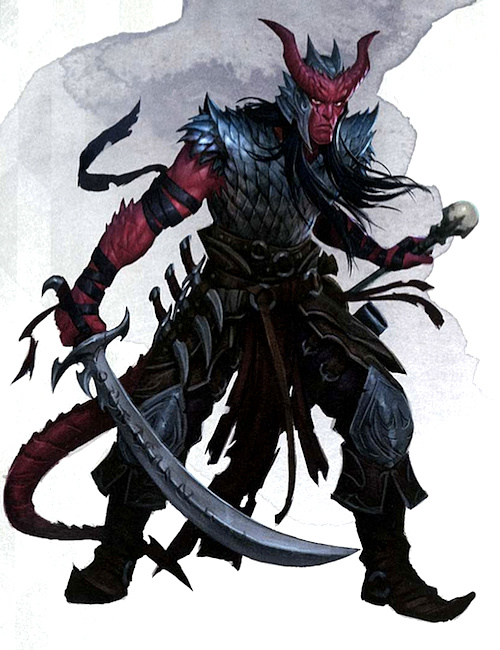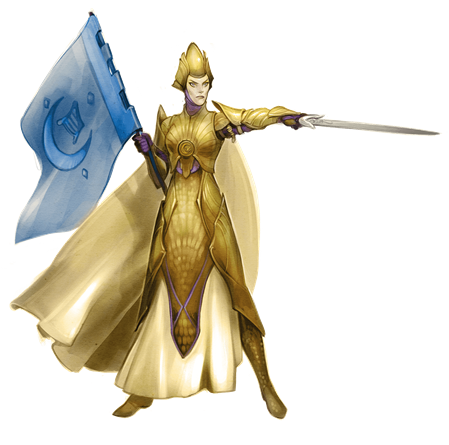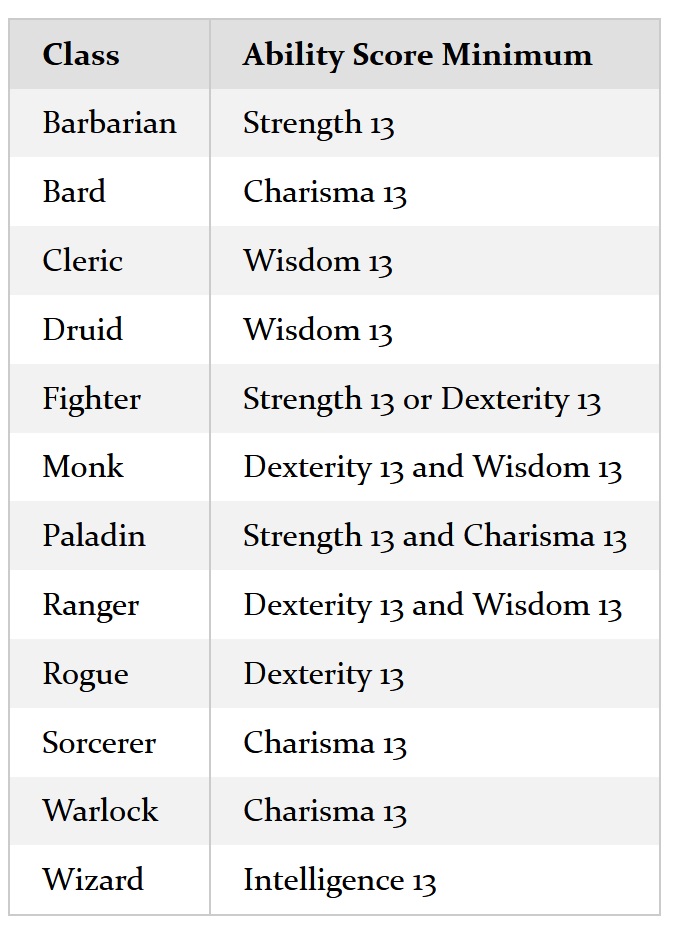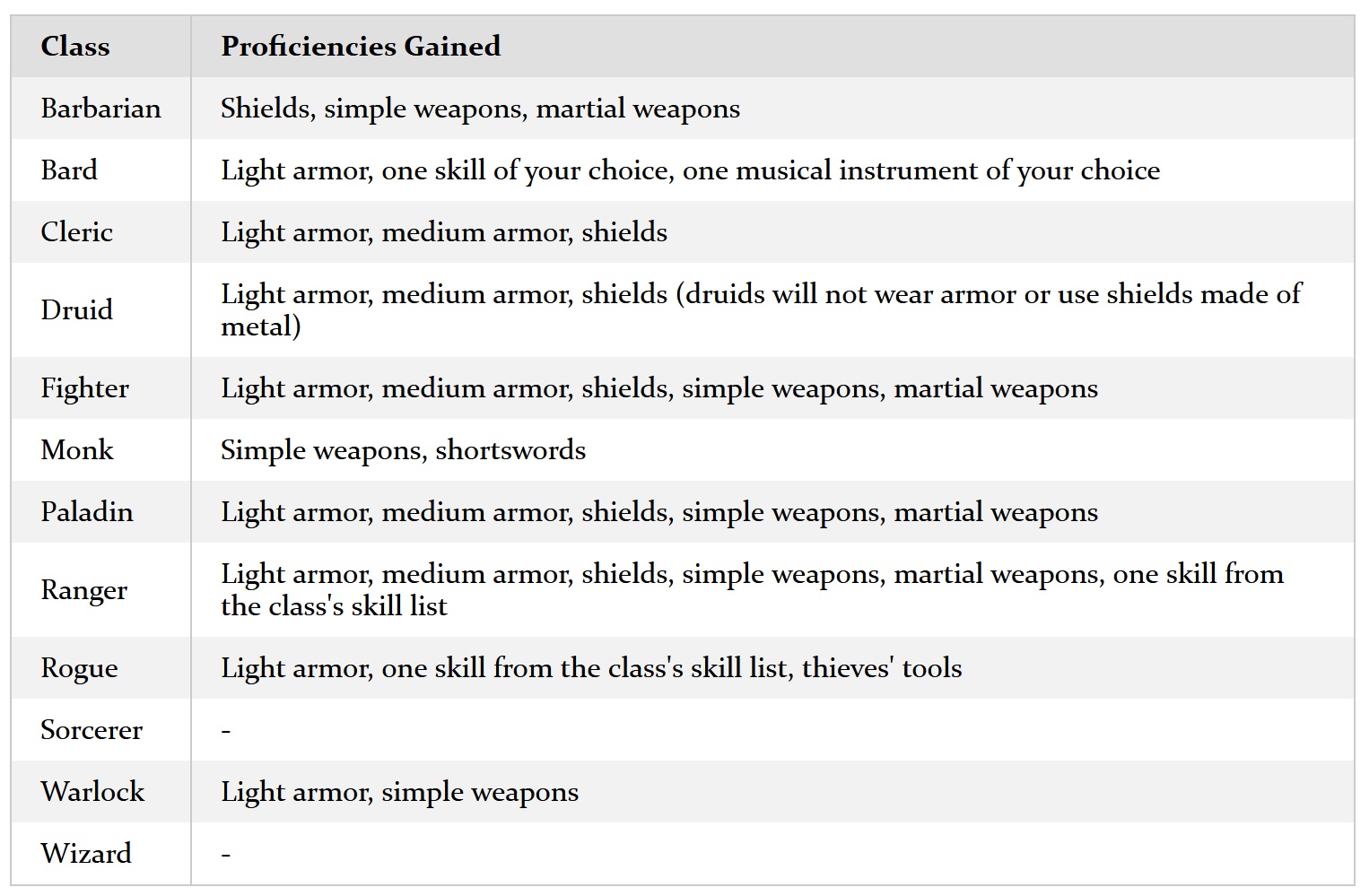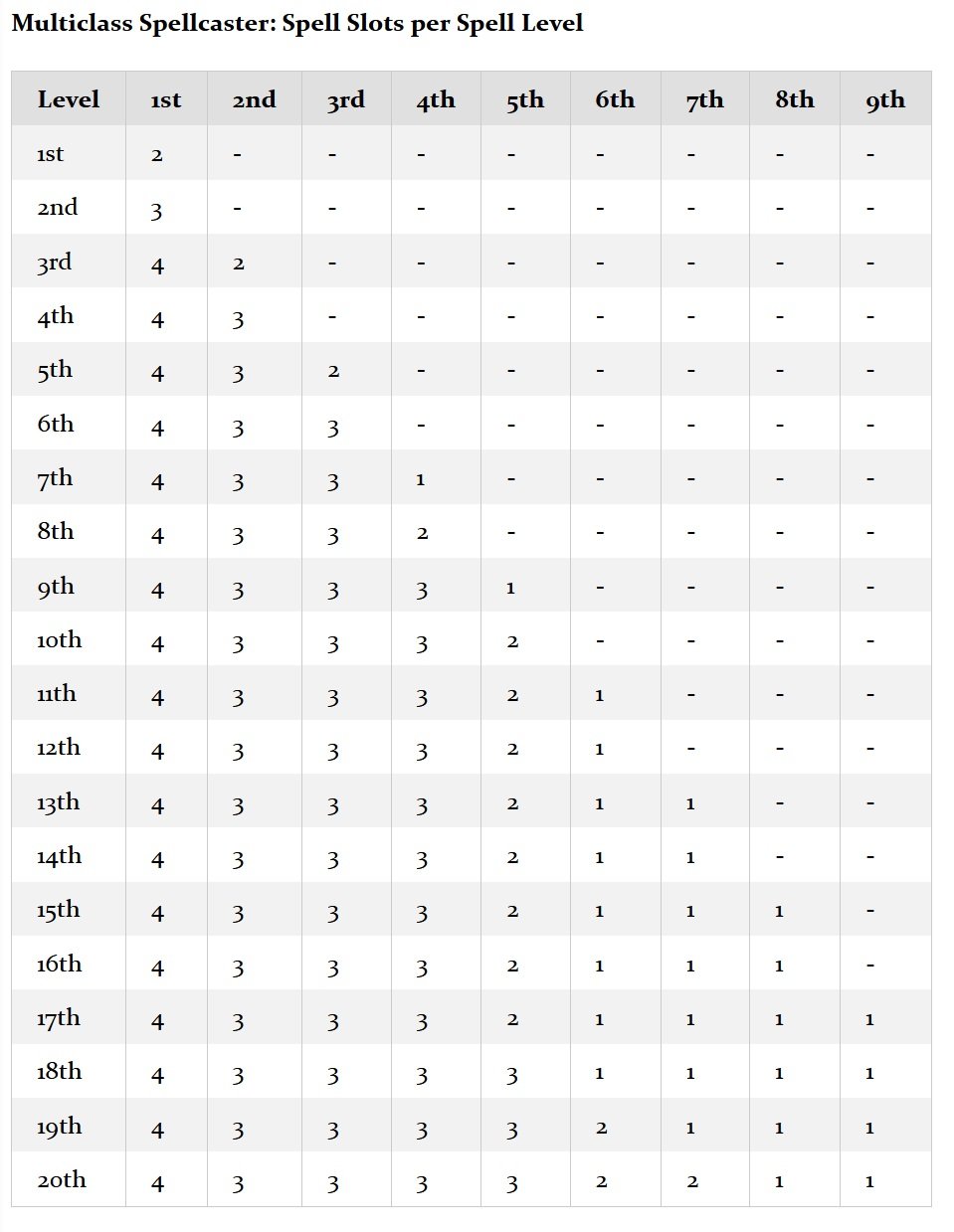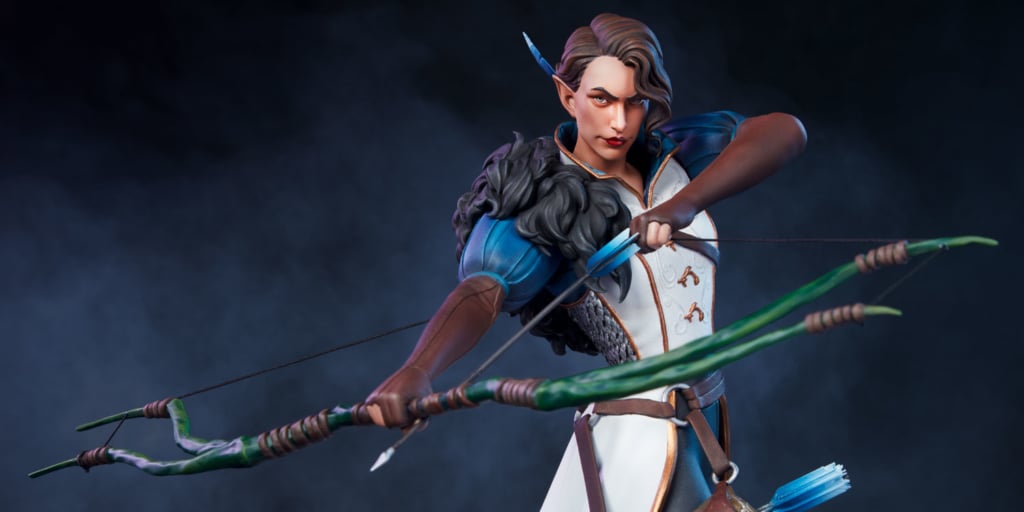D&D: How To Multiclass In 5th Edition

Multiclassing in Dungeons & Dragons can be a great way to add some flexibility, depth, and power to your character. But how does it work?
Let’s talk multiclassing in Dungeons & Dragons 5th Edition. What is it? In a nutshell, multiclassing allows you to take levels in two different classes, gaining powers from both. It comes with a tradeoff, when you level up as a different class, you’ll trade off access to things like class features at certain levels, but often this tradeoff is worth it to gain extra power or spell slots or anything else you can think of as long as you qualify.
So how does it all work? Let’s dive in.
Why to Multiclass?
When you multiclass, the first thing you’ll want to do is figure out what extra class you want to take and why. If you’re a fighter looking to pick up levels of something like wizard, you might want to think about why you want to do that instead of taking the fighter archetype Eldritch Knight which lets you cast spells and swing swords with the best of them.
Often times, the best reason to multiclass is because you think it’s something that makes sense for your character:
- “I finally got into wizard school, time to multiclass into wizard”
- “I realized that my mentor betrayed me, and now I need to learn the ways of the assassin”
- “I decided to take up an instrument and became a bard.”
These are all valid reasons, but they don’t talk too much about the mechanical reasons you’d want to multiclass.
And those often boil down to getting more power, or access to specific abilities like a Fighter’s Second Wind or a Sorcerer’s metamagic abilities.
If you can swing it, multiclassing can lead to some powerful combination of abilities. Here are a few classic archetypes that you might see in 5E.
Paladin/Sorcerer – a powerful melee combatant who typically takes Paladin levels to learn Divine Smite and other abilities (usually around level 6) and switches to Sorcerer for increased numbers of spell slots and more variety of magical abilities.
Warlock/Sorcerer – Sorcerer fuels a lot of multiclass builds, you’ll see. Especially ones where it’s all Charisma. Sor/locks as they’re called, use Warlock spells like Eldritch Blast to help keep their damage consistent, while also using the sorcerer’s ability to create more spells to fill out the weakness of a Warlock.
Fighter/Rogue – A classic combo that gives you powerful melee abilities from both classes (a fighter with sneak attack can be davastating) while still also letting you use a wide variety of skills.
How to Multiclass
So that’s why you might want to multiclass. But how do you do it? Well first things first, you’ll want to make sure you’ve got the right stuff. And by right stuff, we mean qualify for the minimum ability scores needed to multiclass into or out of your current class. The table above has the guidelines–you need to have at least a 13 in the stats associated with the class you’re in as well as the class you’re multiclassing into. So if you were a wizard hoping to multiclass into cleric, you’d need both Intelligence and Wisdom of 13 or more.
Once you know whether or not you qualify it’s pretty straightforward. The next time you take a level, simply mark your first level of the new class. So you might be a 4th level fighter who steps into rogue for their 5th level, and you’d write Fighter 4/Rogue 1.
You gain hit points from your new class, rolling a hit die of the appropriate type (which might mean you gain more hit points if you go from having a d6 hit die to having a d8 or d10). Your proficiency bonus is based on your total level. So whether you’re a Fighter/Rogue 3/2 or 1/4 or however, if the total adds up to five, your proficiency bonus is +3.
When you take your first level in a class other than the one you started in, you only gain some of the new starting proficiencies. Meaning you won’t pick up every skill or tool associated with the class, but here’s a handy table:
Other than that, you gain features as appropriate for gaining a level in whatever class you’ve just taken a new level in. You’ll have to consult the tables to see what exactly you might grant. But there are a few features with extra rules: Channel Divinity, Extra Attack, Unarmored Defense, and Spellcasting. Let’s go through each of them:
Channel Divinity is additive. If you already have channel divinity from cleric and you get it from leveling up as a paladin as well, then you gain access to both a cleric and paladin’s effects when using channel divinity–but you don’t gain extra uses of the ability until you’re high enough level to explicitly have been granted them from a class.
Extra Attack is a simple one. If you have extra attack from more than one class, the features don’t add together but instead you use the best version.
Unarmored Defense is straightforward: if you have Unarmored Defense from one class already, you can’t gain it from another class.
Finally Spellcasting is perhaps the funkiest one. You might have to use different versions of spellcasting. For instance, rangers simply know spells but wizards know and prepare spells into their spellbooks, and multiclass wizard/rangers get to choose ranger spells and prepare wizard spells keeping them fairly separate.
Which you’ll want because your spell slots are determined overall:
Add together all your levels in the bard, cleric, druid, sorcerer, and wizard classes, and half your levels (rounded down) in the paladin and ranger classes. Use this total to determine your spell slots by consulting the Multiclass Spellcaster table.
It’s easiest to just keep this table handy. You’ll also want a handy way to keep track of which abilities you have and be careful not to multiclass at the wrong time–a lot of folks will multiclass right before gaining a particular feature (like a Fighter’s Action Surge or the ability score increase they get at 4th level) in which case you’d miss out.
Anyway, that’s the most basic overview of multiclassing. We’ll take you through some specific builds another time. But for now…
Happy Adventuring!

